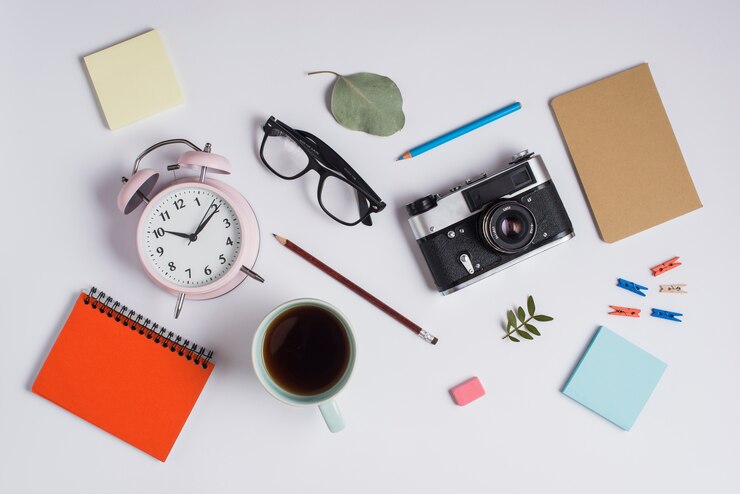The Art of Paying Attention
In today’s fast-paced world, we’re often too busy to pause and truly observe our environment. We walk past countless objects every day without a second thought. Yet, when we slow down and pay attention, we unlock a treasure trove of inspiration. The texture of a brick wall, the shadow cast by a tree, or even the way a scarf folds on a chair can become a starting point for a new idea.
Take, for instance, a simple lamp. At first glance, it’s just a functional object that provides light. But look closer, and you might notice the interplay of materials, the elegance of its design, or the soft glow it casts in a dim room. These small details, often overlooked, can inspire designs, paintings, or even poetry. The act of mindful observation allows us to see beyond utility and into the realm of beauty.
The Emotional Connection to Everyday Objects
Objects carry stories and emotions. A chipped coffee cup might remind you of a lazy Sunday morning, while a worn-out doormat could symbolize the warmth of home. These emotional connections can add depth to creative projects, infusing them with meaning and relatability.
For artists, designers, and writers, these stories provide endless opportunities. Think about the symbolism of objects in literature or how designers incorporate nostalgia into their work. A vintage-inspired dress or a retro-themed poster often resonates because it taps into shared memories. Everyday objects are more than just things; they’re touchpoints to human experiences.
Everyday Objects as Historical Narratives
When we delve deeper, everyday items can also serve as markers of time and culture. A rotary telephone, for example, isn’t just an object; it’s a window into a bygone era. Its design, functionality, and even its sound evoke a sense of history and nostalgia. Similarly, the transition from handwritten letters to emails reflects societal shifts in communication and technology.
Creators can use these narratives to inform their work. A filmmaker might incorporate vintage props to evoke a specific time period, or a graphic designer could use typewriter fonts to give their project a timeless feel. By observing the evolution of everyday objects, we gain insight into how the mundane reflects broader societal changes.
Everyday Objects in Art and Design
Throughout history, artists and designers have drawn inspiration from everyday life. The still-life paintings of the Dutch Golden Age celebrated the beauty of ordinary items like fruit, glassware, and flowers. These works elevated the mundane to the extraordinary, reminding us that even the simplest objects have intrinsic value.
In modern times, this tradition continues. Andy Warhol’s iconic Campbell’s Soup Cans turned an everyday grocery item into a symbol of pop art. Similarly, designers like Dieter Rams found beauty in functional, minimalist objects, proving that good design doesn’t need to be flashy. The Bauhaus movement also championed the idea that form and function should coexist harmoniously, often drawing inspiration from practical, everyday items.
Today, creatives in various fields continue to reinterpret the ordinary. A logo designer might use the curve of a coffee cup handle as the basis for their typography. A fashion designer could find inspiration in the pattern of a cracked sidewalk, translating its irregular beauty into a fabric print. The possibilities are limitless when we open our eyes to the world around us.
Practical Steps to Find Inspiration in Everyday Objects
Finding inspiration doesn’t require elaborate efforts or exotic travels. Sometimes, all it takes is a shift in perspective. Here are a few ways to uncover the hidden potential in everyday objects:
1. Slow Down and Observe
Take a few moments each day to focus on your surroundings. Notice the details you’d typically overlook—the texture of a wall, the arrangement of books on a shelf, or the interplay of light and shadow in a room. Ask yourself what stands out and why.
2. Document Your Discoveries
Keep a journal, sketchbook, or photo collection of the objects and patterns that catch your eye. By recording your observations, you’ll start building a library of inspiration to draw from when working on creative projects.
3. Experiment with Transformation
Once you’ve identified an inspiring object, think about how you can reimagine it. Could you abstract its form into a sculpture? Translate its texture into a fabric design? Use its color palette as a starting point for a painting? Let your imagination run wild.
4. Combine the Unexpected
Blend elements from different objects to create something new. For instance, the sleek curves of a car could inspire the design of a piece of furniture, or the vibrant hues of fresh produce might inform a graphic design project.
5. Find Stories in Objects
Ask yourself what an object represents. What memories does it evoke? What purpose does it serve? By exploring the narrative behind an item, you can infuse your work with depth and meaning.
Why Everyday Objects Matter
At first glance, the idea of drawing inspiration from everyday objects might seem trivial. But when we pause to reflect, we realize that these items are deeply intertwined with our lives. They tell stories, evoke emotions, and provide comfort and utility. By tapping into this rich source of inspiration, we can create work that resonates with people on a personal level.
Moreover, everyday objects teach us the value of simplicity. In a world that often glorifies excess, the beauty of the ordinary reminds us to appreciate what we have and find joy in the little things. Whether it’s the satisfying click of a pen or the soothing warmth of a knitted blanket, these small pleasures can ground us and spark our creativity.
Conclusion
Inspiration doesn’t always come from grand landscapes or epic experiences. Sometimes, it’s hidden in the subtle curve of a chair, the playful colors of a toy, or the intricate pattern on a dishcloth. Everyday objects have the power to transform the way we think and create, offering endless opportunities for discovery and innovation.
Tags: Creativity, Design Ideas, Everyday Life, Inspiration
